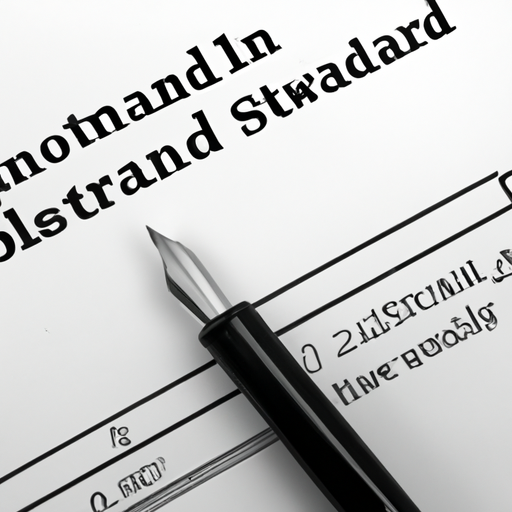Standard work is a concept that is commonly used in the field of lean manufacturing and continuous improvement. It refers to the documented and agreed-upon best practices for completing a specific task or process. Standard work is essential for ensuring consistency, quality, and efficiency in operations.
enter;margin:5px 0;'>

The process of creating standard work typically involves several key steps. First, the current process is observed and analyzed to identify any inefficiencies, waste, or opportunities for improvement. This may involve time studies, value stream mapping, or other tools to understand the current state of the process.
Once the current process is understood, the next step is to develop a standardized method for completing the task. This may involve breaking down the process into its individual steps, determining the best sequence for completing those steps, and establishing the standard work sequence. Standard work may also include specific work instructions, visual aids, or checklists to guide employees through the process.
After the standard work has been developed, it is important to train employees on the new process and ensure that they understand and can follow the standard work instructions. This may involve hands-on training, job aids, or other methods to reinforce the new process.
Once the standard work has been implemented, it is important to monitor and measure performance to ensure that the process is being followed and to identify any opportunities for further improvement. This may involve regular audits, performance metrics, or other tools to track progress and identify areas for refinement.
Standard work is a dynamic process that should be continuously reviewed and updated as needed. As processes change, new technologies are introduced, or customer requirements evolve, standard work may need to be revised to ensure that it remains relevant and effective.
In conclusion, standard work is a critical component of lean manufacturing and continuous improvement. By documenting and following best practices for completing tasks, organizations can improve quality, consistency, and efficiency in their operations. Standard work is a dynamic process that should be continuously reviewed and updated to ensure that it remains relevant and effective.
Standard work is a concept that is commonly used in the field of lean manufacturing and continuous improvement. It refers to the documented and agreed-upon best practices for completing a specific task or process. Standard work is essential for ensuring consistency, quality, and efficiency in operations.
enter;margin:5px 0;'>

The process of creating standard work typically involves several key steps. First, the current process is observed and analyzed to identify any inefficiencies, waste, or opportunities for improvement. This may involve time studies, value stream mapping, or other tools to understand the current state of the process.
Once the current process is understood, the next step is to develop a standardized method for completing the task. This may involve breaking down the process into its individual steps, determining the best sequence for completing those steps, and establishing the standard work sequence. Standard work may also include specific work instructions, visual aids, or checklists to guide employees through the process.
After the standard work has been developed, it is important to train employees on the new process and ensure that they understand and can follow the standard work instructions. This may involve hands-on training, job aids, or other methods to reinforce the new process.
Once the standard work has been implemented, it is important to monitor and measure performance to ensure that the process is being followed and to identify any opportunities for further improvement. This may involve regular audits, performance metrics, or other tools to track progress and identify areas for refinement.
Standard work is a dynamic process that should be continuously reviewed and updated as needed. As processes change, new technologies are introduced, or customer requirements evolve, standard work may need to be revised to ensure that it remains relevant and effective.
In conclusion, standard work is a critical component of lean manufacturing and continuous improvement. By documenting and following best practices for completing tasks, organizations can improve quality, consistency, and efficiency in their operations. Standard work is a dynamic process that should be continuously reviewed and updated to ensure that it remains relevant and effective.
